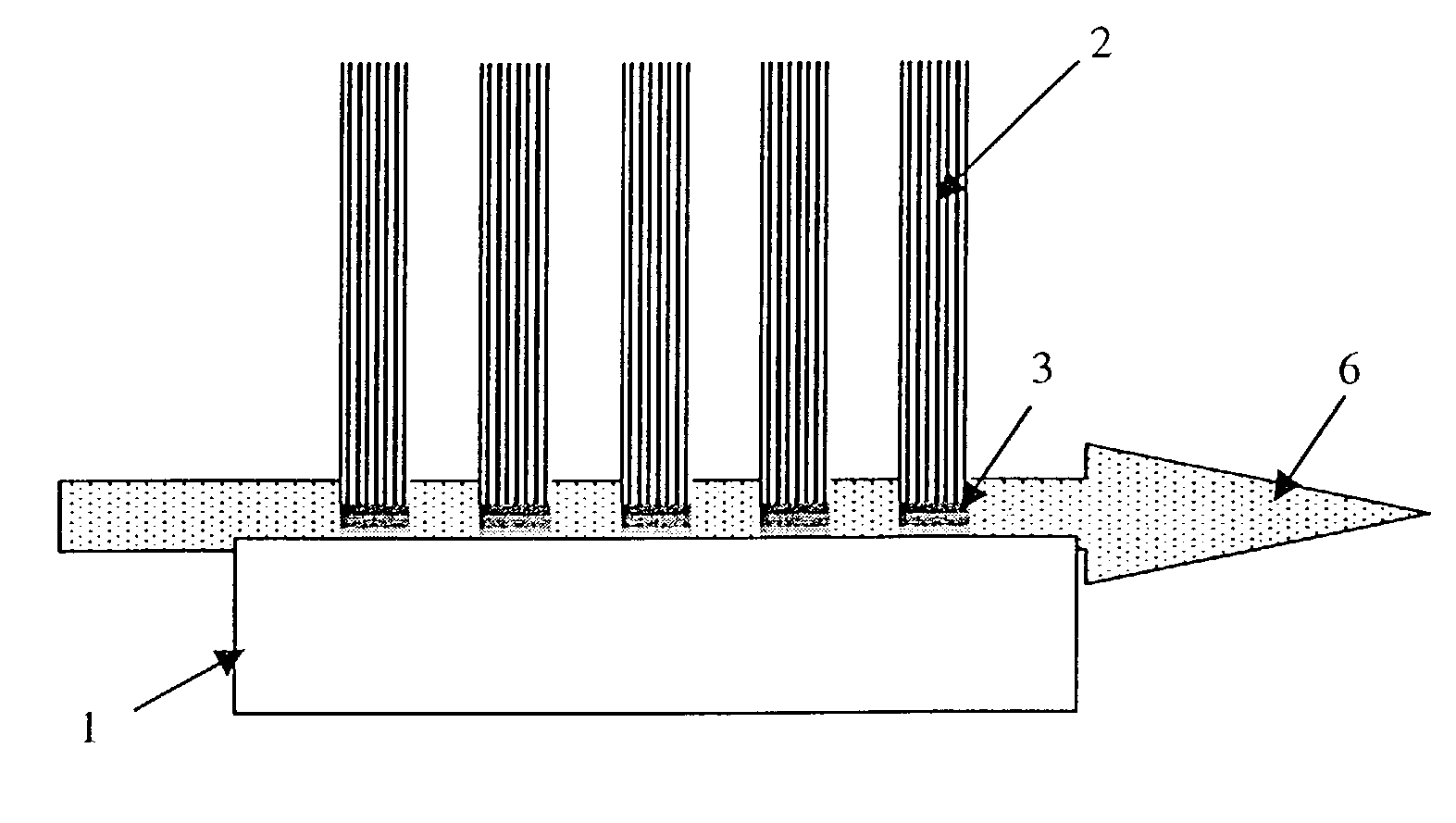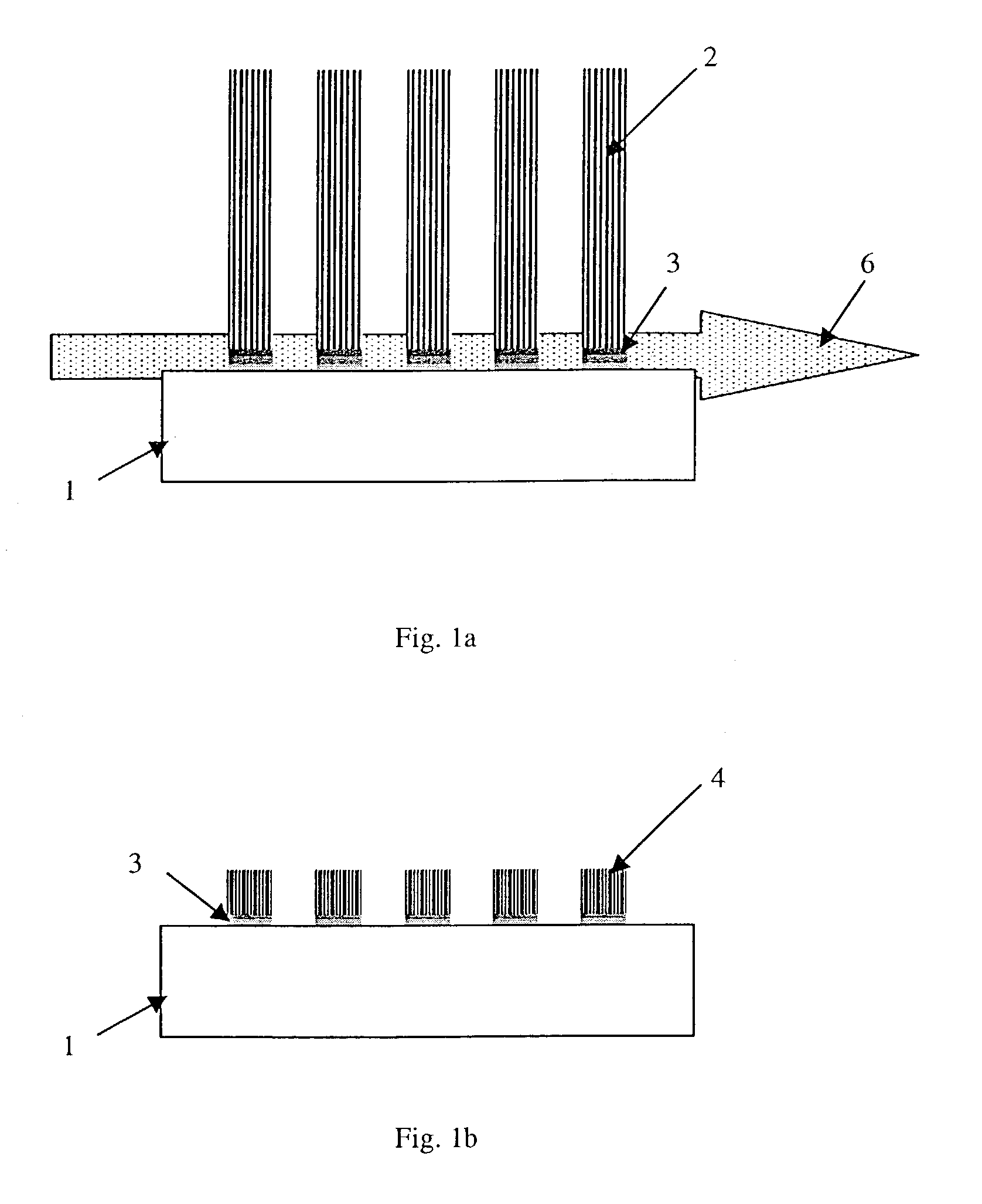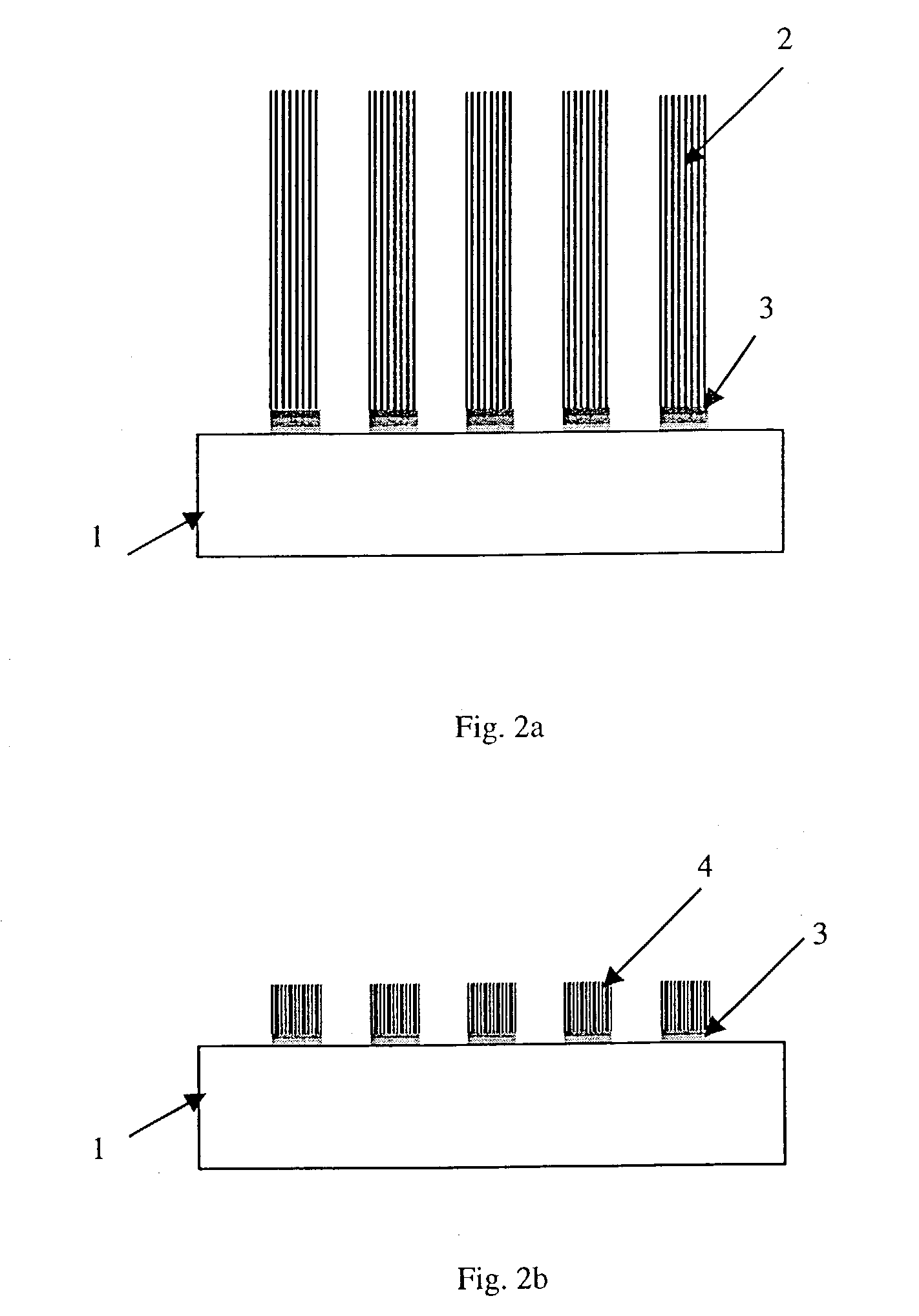Method of synthesising carbon nano tubes
a carbon nanotube and carbon nano technology, applied in the field of carbon nanotube synthesis, can solve the problems of additional procedural steps, high impact depth on the surface of the catalyst layer, and clearly is a significant economic disadvantage, and achieve the effects of simple and rapid manner, enhanced physical, chemical and/or conductive properties of said carbon nanotubes, and high procedural flexibility
- Summary
- Abstract
- Description
- Claims
- Application Information
AI Technical Summary
Benefits of technology
Problems solved by technology
Method used
Image
Examples
Embodiment Construction
[0055]FIGS. 1a and 1b show a first preferred embodiment according to the invention in which prior to the formation of carbon nano tubes a catalyst layer is formed from a gaseous phase comprising catalysts and deposited on the support member by the use of ion beam. In particular, in FIG. 1a an organometallic gas 6 is injected forming a jet above the support member 1. Controlled ion beams 2 are pointing towards the support member 1. When the controlled beams 2 comprising Ar+-ions are crossing the gas jet 6 comprising preferably Ni, Co or Fe particles, the ion beams 2 induce decomposition of the gas 6 due to the collision with the metal particles. Tear shaped catalytically active metal particles 3 are formed which are immediately deposited on the surface of the support member 1. According to FIG. 1a the surface of a support member 1 is not entirely coated with the catalytically active particles 3. A precise placement of the particles 3 is conducted by the ion beam 2. The exact position...
PUM
| Property | Measurement | Unit |
|---|---|---|
| thickness | aaaaa | aaaaa |
| temperature | aaaaa | aaaaa |
| thickness | aaaaa | aaaaa |
Abstract
Description
Claims
Application Information
 Login to View More
Login to View More - R&D
- Intellectual Property
- Life Sciences
- Materials
- Tech Scout
- Unparalleled Data Quality
- Higher Quality Content
- 60% Fewer Hallucinations
Browse by: Latest US Patents, China's latest patents, Technical Efficacy Thesaurus, Application Domain, Technology Topic, Popular Technical Reports.
© 2025 PatSnap. All rights reserved.Legal|Privacy policy|Modern Slavery Act Transparency Statement|Sitemap|About US| Contact US: help@patsnap.com



